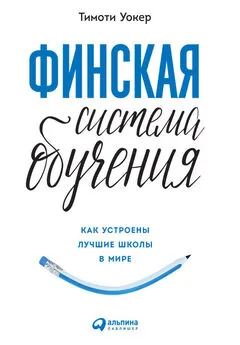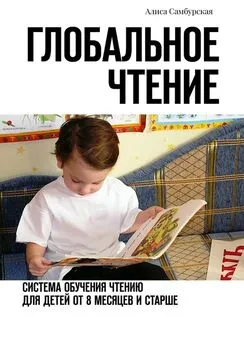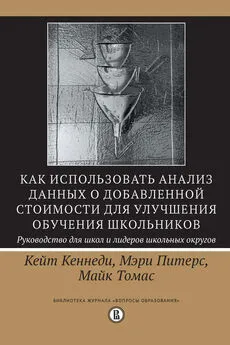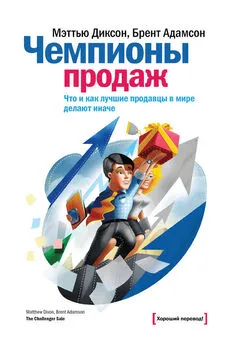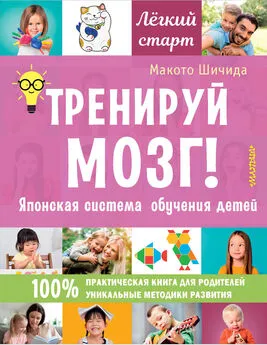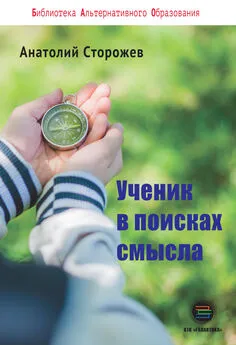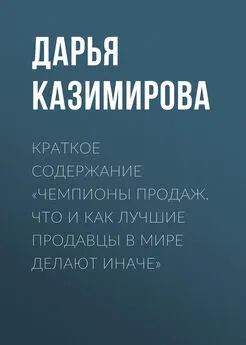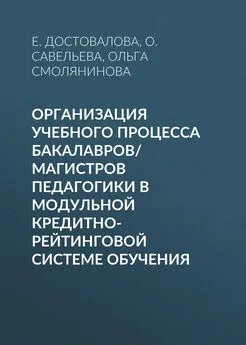Тимоти Уокер - Финская система обучения. Как устроены лучшие школы в мире
- Название:Финская система обучения. Как устроены лучшие школы в мире
- Автор:
- Жанр:
- Издательство:Альпина Паблишер
- Год:2018
- Город:Москва
- ISBN:978-5-9614-5198-6
- Рейтинг:
- Избранное:Добавить в избранное
-
Отзывы:
-
Ваша оценка:
Тимоти Уокер - Финская система обучения. Как устроены лучшие школы в мире краткое содержание
В своей книге Уокер рассказывает, как устроена финская система обучения, почему важно обсуждать с учениками их оценки, как предоставление школьникам выбора и совместное планирование помогут им стать более независимыми, почему обилие наглядных материалов на стенах приводит к снижению успеваемости и зачем учителю нужно играть с детьми на переменах. Он предлагает 33 стратегии, которые возможно применить и в наших, российских, школах.
Финская система обучения. Как устроены лучшие школы в мире - читать онлайн бесплатно ознакомительный отрывок
Интервал:
Закладка:
3
Лемов Д. Мастерство учителя. Проверенные методики выдающихся преподавателей. — М.: Манн, Иванов и Фербер, 2015.
4
Имена всех учеников, которые упоминаются в этой книге, изменены. — Прим. авт.
5
Эта оценка является аналогом русской отметки 3.
6
Лоув Р. Последний ребенок в лесу. — М.: Добрая книга, 2007.
7
Имеется в виду средневековый обычай, бытовавший в Швеции (частью которой тогда являлась Финляндия), Дании, Норвегии и Германии: дабы простой народ мог спокойно отметить Рождество, 24 декабря особым королевским указом прекращались любые военные действия и на 20 дней объявлялся Рождественский мир. И сегодня, отдавая дань традиции, в канун праздника на площадях финских городов зачитывают текст этого указа.
8
В финских школах практикуется модульное обучение — способ организации учебного процесса на основе блочно-модульного представления учебной информации.
Комментарии
1
Hargreaves, A. and Shirley, D. (2012). The Global Fourth Way. The quest for educational excellence . Thousand Oaks: Corwin.
2
OECD (2001). Knowledge and Skills for Life. First results from PISA 2000 . Paris: OECD.
3
Sahlberg, P. (2015). Finnish Lessons 2.0: What can the world learn from educational change in Finland. New York: Teachers College Press.
4
Allianssi (2016). Nuorista Suomessa . Helsinki: Allianssi.
5
Sahlberg, P. (2015). Finnish Lessons 2.0: What can the world learn from educational change in Finland? [Kindle Reader version]. Retrieved from Amazon.com.
6
Lemov, D. (2015). Teach like a champion 2.0: 62 techniques that put students on the path to college [Kindle Reader version, р. 442]. Retrieved from Amazon.com.
7
Seppälä, E. (2016). The happiness track: How to apply the science of happiness to accelerate your success [Kindle Reader version, р. 8]. Retrieved from Amazon.com.
8
Raghunathan, R. (2016). If you’re so smart, why aren’t you happy? [Kindle Reader version]. Retrieved from Amazon.com.
9
Pinsker, J. (2016, April 26). Why so many smart people aren’t happy. The Atlantic . Retrieved October 20, 2016, from http://www.theatlantic.com/business/archive/2016/04/why-so-many-smart-people-arent-happy/479832/.
10
Seppälä, E. (2016). The happiness track: How to apply the science of happiness to accelerate your success [Kindle Reader version, р. 1]. Retrieved from Amazon.com.
11
Там же, р. 7.
12
National Center for Children in Poverty. (2016). Child poverty. Retrieved July 15, 2016, from http://www.nccp.org/topics/child-poverty.html.
13
Pellegrini, A. (2005, March 21). Give children a break. Project Syndicate . Retrieved on October 27, 2016, from https://www.projectsyndicate.org/commentary/give-children-a-break.
14
Там же.
15
Там же.
16
Turner, S. (2013, October 18). TCU professor launches «pilot» program on recess at Starpoint School. TCU 360. Retrieved October 20, 2016, from https://www.tcu360.com/story/18744tcu-professor-launches-pilot-program-recess-starpoint-school/.
17
Connelly, C. (2016, January 3). Turns out monkey bars and kickball might be good for the brain. National Public Radio . Retrieved October 19, 2016, from http://www.npr.org/sections/ed/2016/01/03/460254858/turns-out-monkey-bars-and-kickball-are-good-for-the-brain.
18
Schwartz, K. (2014, October 6). Why daydreaming is critical to effective learning. Mindshift. Retrieved October 20, 2016, from https://ww2.kqed.org/mindshift/2014/10/06/why-daydreaming-is-critical-to-efective-learning/.
19
Schulte, B. (2014). Overwhelmed: Work, love, and play when no one has the time. [Kindle Reader version]. Retrieved from Amazon.com.
20
Deruy, E. (2016, May 20). Does mindfulness actually work in schools? The Atlantic . Retrieved October 20, 2016, from http://www.theatlantic.com/education/archive/2016/05/testing-mindfulness-in-the-early-years/483749/.
21
Walker, T. (2015, January 9). Finnish schools are on the move — and America’s need to catch up. The Atlantic . Retrieved October 20, 2016, from http://www.theatlantic.com/education/archive/2015/01/fnnish-schools-are-on-the-moveand-americas-need-to-catch-up/384358/.
22
Там же.
23
Там же.
24
Там же.
25
Там же.
26
Там же.
27
Liikkuva Koulu. (n.d.). More active and pleasant school days, brochure. Retrieved October 20, 2016, from http://www.liikkuvakoulu.fi/filebank/2342-Liikkuvakoulu_yleisesite_en_web.pdf.
28
Walker, T. (2016c, September 29). The ticking clock of teacher burnout. The Atlantic. Retrieved on October 22, 2016, from http://www.theatlantic.com/education/archive/2016/09/the-ticking-clock-of-us-teacher-burnout/502253.
29
Walker, T. (2016b, October 7). The disproportionate stress plaguing American teachers. Retrieved on October 22, 2016, from http://www.theatlantic.com/education/archive/2016/10/the-disproportionate-stress-plaguing-american-teachers/503219.
30
Fisher, A. V., Godwin, K. E., amp; Seltman, H. (2014). Visual environment, attention allocation, and learning in young children: when too much of a good thing may be bad. Psychological Science 25 (7), 1362–1370.
31
Hoffman, J. (2014, June 9). Rethinking the colorful kindergarten classroom. Well . Retrieved October 20, 2016, from http://well.blogs.nytimes.com/2014/06/09/rethinking-the-colorful-kindergarten-classroom/?_r=0.
32
Там же.
33
Там же.
34
Walker, T. (2014, June 30.) How Finland keeps kids focused through free play. The Atlantic. Retrieved on October 22, 2016, from http://www.theatlantic.com/education/archive/2014/06/how-finland-keeps-kids-focused/373544.
35
Allen, J. G., MacNaughton, P., Satish, U., Santanam, S., Vallarino, J., amp; Spengler, J. D. (2016). Associations of cognitive function scores with carbon dioxide, ventilation, and volatile organic compound exposures in office workers: A controlled exposure study of green and conventional office environments. Environmental Health Perspectives , 124 (6), 805–812. http://dx.doi.org/10.1289/ehp.1510037.
36
Cheryan, S., Ziegler, S. A., Plaut, V. C., amp; Meltzof, A. N. (2014). Designing classrooms to maximize student achievement. Policy Insights from the Behavioral and Brain Sciences , 1 (1), 4–12. http://dx.doi.org/10.1177/2372732214548677.
37
Sage Publications. (2014, November 4). Researchers recommend features of classroom design to maximize student achievement [Press release]. Retrieved September 22, 2016, from https://us.sagepub.com/en-us/nam/press/researchers-recommend-features-of-classroom-design-to-maximize-student-achievement-0.
38
Там же.
39
Louv, R. (2008). Last child in the woods: Saving our children from nature-deficit disorder. Chapel Hill, NC: Algonquin Books, р. 205.
40
Louv, R. (2011). The nature principle: Human restoration and the end of nature-deficit disorder. Chapel Hill, NC: Algonquin Books.
41
Louv, R. (2008). Last child in the woods: Saving our children from nature-deficit disorder. Chapel Hill, NC: Algonquin Books.
42
Walker, T. (2016a, September 15). Kindergarten, naturally. The Atlantic . Retrieved on October 22, 2016, from http://www.theatlantic.com/education/archive/2016/09/kindergarten-naturally/500138.
43
Цит. по: Walker, T. (2016a, September 15). Kindergarten, naturally. The Atlantic . Retrieved on October 22, 2016, from http://www.theatlantic.com/education/archive/2016/09/kindergarten-naturally/500138.
44
Walker, T. (2016a, September 15). Kindergarten, naturally. The Atlantic . Retrieved on October 22, 2016, from http://www.theatlantic.com/education/archive/2016/09/kindergarten-naturally/500138.
45
Цит. по: Louv, R. (2008). Last child in the woods: Saving our children from nature-deficit disorder. Chapel Hill, NC: Algonquin Books, р. 203.
46
Там же.
47
Там же, р. 219.
48
Finnish National Board of Education. (2016). National core curriculum for basic education 2014 . Helsinki: Next Print, р. 31.
49
Khazan, O. (2016, July 21). How noise pollution impairs learning. The Atlantic . Retrieved October 20, 2016, from http://www.theatlantic.com/health/archive/2016/07/toddlers-and-noise/492164.
50
Deruy, E. (2016, May 20). Does mindfulness actually work in schools? The Atlantic . Retrieved October 20, 2016, from http://www.theatlantic.com/education/archive/2016/05/testing-mindfulness-in-the-early-years/483749.
51
Schonert-Reichl, K. A., Oberle, E., Lawlor, M. S., Abbott, D., Thomson, K., Oberlander, T. F., amp; Diamond, A. (2015). Enhancing cognitive and socio-emotional development through a simple-toadminister mindfulness-based school program for elementary school children: A randomized control trial. Developmental Psychology , 51 (1), 52–66.
52
Davis, L. C. (2015, August 31). When mindfulness meets the classroom. The Atlantic . Retrieved October 20, 2016, from http://www.theatlantic.com/education/archive/2015/08/mindfulness-education-schools-meditation/402469.
53
Там же.
Читать дальшеИнтервал:
Закладка:
